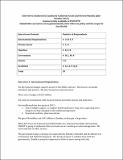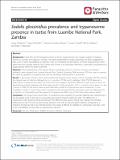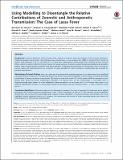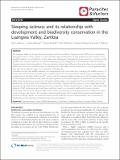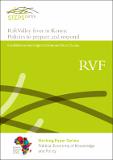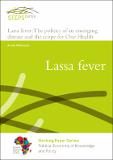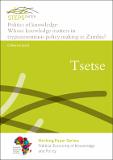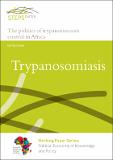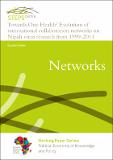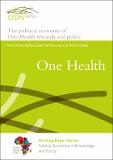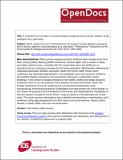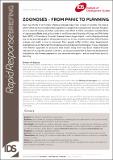Dynamic Drivers of Disease in Africa
Browse by
Recent Submissions
-
The business case for One Health
(Onderstepoort Journal of Veterinary Research, 2014)This article outlines a pathway to develop the business case for One Health. It describes the origin and development of One Health and then identifies five potential areas where One Health can add value and reduce costs. ... -
Sodalis glossinidius prevalence and trypanosome presence in tsetse from Luambe National Park, Zambia
(Parasites & Vectors, 2014-08-19)Background Tsetse flies are the biological vectors of African trypanosomes, the causative agents of sleeping sickness in humans and nagana in animals. The tsetse endosymbiont Sodalis glossinidius has been suggested to ... -
Using modelling to disentangle the relative contributions of Zoonotic and Anthroponotic transmission: the case of Lassa Fever
(PLOS Neglected Tropical Diseases, 2015-01-08)Background Zoonotic infections, which transmit from animals to humans, form the majority of new human pathogens. Following zoonotic transmission, the pathogen may already have, or may acquire, the ability to transmit ... -
Sleeping sickness and its relationship with development and biodiversity conservation in the Luangwa valley, Zambia
(BioMed Central, 2015-04)The Luangwa Valley has a long historical association with Human African trypanosomiasis (HAT) and is a recognised geographical focus of this disease. It is also internationally acclaimed for its high biodiversity and ... -
Rift Valley fever in Kenya: Policies to prepare and respond
(STEPS Centre, 2015-03-23)Rift Valley fever (RVF) is a zoonotic infection incompletely understood by scientists, pastoralists and policy makers. The irregular intervals at which outbreaks occur make it difficult for governments to develop and ... -
Lassa fever: The politics of an emerging disease and the scope for One Health
(STEPS Centre, 2015-03-11)This paper explores the politics of knowledge and disease control for Lassa fever, a zoonotic viral haemorrhagic fever which is endemic in parts of West Africa. The Lassa virus has been classified as a Category A pathogen, ... -
Responding to uncertainty: Bats and the construction of disease risk in Ghana
(STEPS Centre, 2015-02-12)Zoonotic disease has gained international attention since the identification of avian and swine influenza, with academic focus on the modelling of disease emergence, and policy centring on disciplinary approaches of analysis. ... -
Politics of knowledge: Whose knowledge matters in trypanosomiasis policy making in Zambia?
(STEPS Centre, 2014-11-14)This paper explores the framings of trypanosomiasis, a widespread and potentially fatal zoonotic disease transmitted by tsetse flies (Glossina species) affecting both humans and livestock. This is a country case study ... -
The politics of trypanosomiasis control in Africa
(STEPS Centre, 2014-01-13)African trypanosomiasis is a devastating disease, both for humans and animals. Over the last hundred years huge efforts have been made to control it. This paper explores the scientific and policy debates surrounding the ... -
Towards One Health? Evolution of international collaboration networks on Nipah virus research from 1999-2011
(STEPS Centre, 2014-11)The world is now facing the emergence of new pathogens and the return of old ones at an unprecedented speed. Among the wide range of emerging diseases, zoonoses – infections naturally transmitted between vertebrate animals ... -
The political economy of One Health research and policy
(STEPS Centre, 2015-03)‘One Health’ has emerged over the last decade as a key concept guiding international research and policy in the field of emerging infectious diseases such as zoonoses. This paper explores the emergence of One Health and ... -
A framework for the study of zoonotic disease emergence and its drivers: spillover of bat pathogens as a case study
(Royal Society Publishing, 2012-09-10)Many serious emerging zoonotic infections have recently arisen from bats, including Ebola, Marburg,SARS-coronavirus, Hendra, Nipah, and a number of rabies and rabies-related viruses, consistent with the overall observation ... -
Zoonoses: From panic to planning
(2013-12-12)Over two thirds of all human infectious diseases have their origins in animals. The rate at which these zoonotic diseases have appeared in people has increased over the past 40 years, with at least 43 newly identified ...

